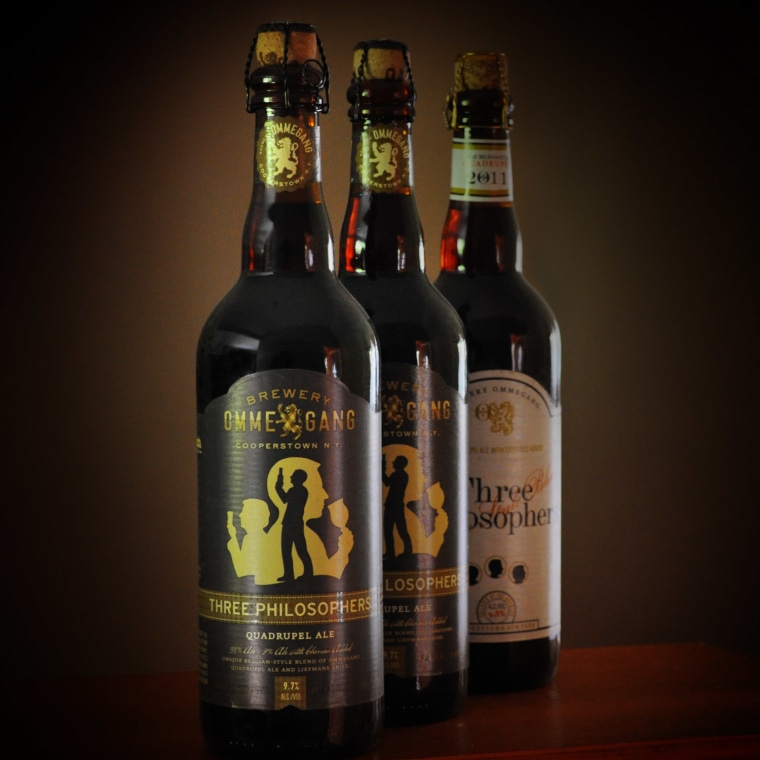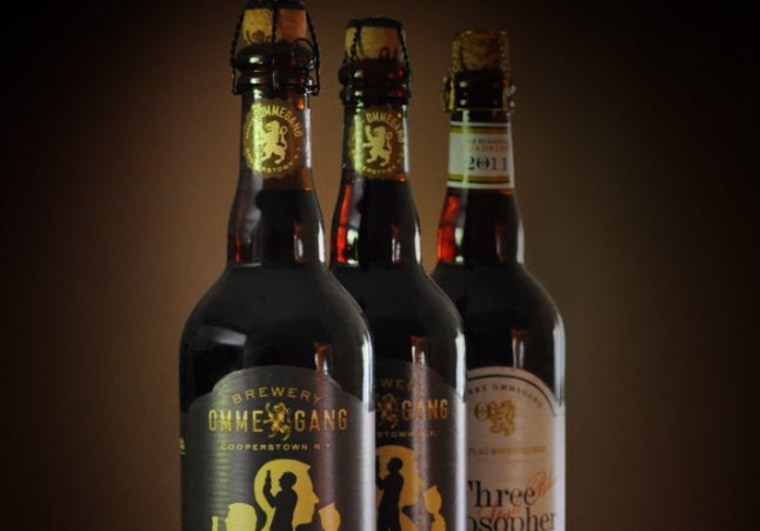
Beer is best when it’s fresh. This is what we’ve had drilled into our heads for years thanks to commercials about labels with “born on” dates and tales of beers that skunked after spending too long in the garage.
While “fresher is better” holds true for about 99 percent of the beers out there, there are a select few that age like fine wine. Putting these beers away in a dark, cool place for six months to six years can yield wonderful results.
Patrick Dawson wrote the book on aging beer, and he says choosing the right beer to cellar comes down to what he calls “the three Ss.”
“Any beer you want to age should be strong, sour or smoked,” Dawson told TODAY.com. Dawson says that elevated alcohol content, the acidity from a sour beer, or the phenols that give a smoked beer its character all act as preservatives, giving a beer time to develop new and interesting flavors while warding off the nasty tastes that can creep in when a beer sits for too long.
“Over time, wonderful vintage flavors start to emerge – tastes like sherry, port, toffee and figs – flavors you don’t find in a fresh beer,” Dawson said. He also noted that cellaring a beer allows its flavors to integrate and become more complex. “The flavors come together and mellow, giving each element of a beer’s taste room to shine.”
One such cellar-friendly beer is Ommegang Three Philosophers, a Belgian Quadrupel Ale with a big and boozy 9.7 percent alcohol-by-volume.
Ommegang has made it easy for impatient beer lovers to experience the graceful transformation age brings to this beer by offering the Three Philosophers Cellared Set, featuring three 750ml bottles of 2011, 2012, and 2013 vintages. It’s like a time machine in a box; a chance to zoom into the future to discover what two years of aging can do for a brew.
I cracked open the whole set and tasted all three beers back-to back using identical Spiegelau tulip glasses. I wanted to see if the differences were detectable and worth the wait. (Spoiler alert: Yes, and yes.)
I started at the beginning with the 2013, before time had much of a chance to work its magic on the recipe. Its nose was warm and spicy, with notes of clove and boozy banana layered in with the sweet smell of caramel. A sip started with a thick thread of earthy caramel from the malts, giving way to a smattering of peppery spice. A chest warming blossom of boozy alcohol then emerged, followed by a dry and vinous finish. Overall, this beer was quite delicious with very little age on it.
Next, I jumped straight to the 2011, wanting to experience the deepest contrast of flavors offered up by this set of beers. The nose of the 2011 was more subtle and wine like than the 2013, with tart notes of dark fruit leading the charge. The caramel and clove esters that were so apparent in the 2013 were all but gone, just a faint whisper lurking behind an earthy and ever-so-slightly sour bouquet.
A sip revealed a beer refined - the broad swath of caramel from the 2013 had diminished, as had the boozy punch at the end of the flavor. In their places were tastes of dried apricots and figs, cocoa nibs, and a richer, almost toasted caramel flavor imbuing the beer with a wine-like quality. All told, the flavor was more compact, the tastes more integrated with one another than in the younger brew, just as Dawson said they would be.
Tasting them the first time through, I thought the 2013 was more to my liking, as its more lively nose, brighter caramel taste and perfect blossom of booze hit all my sweet spots. But tasting them back-to-back, sip-for-sip, I realized just how much more sophisticated the beer’s flavor had become over time. The individual attributes I enjoyed so much in the 2013 were mostly gone, but the integrated taste of the 2011 vintage was just as flavorful, but more sublime.
As you may have guessed, the taste of the 2012 straddled both beers, making it either the perfect blend of flavors or a work in progress, depending on your preferences.
This is exactly why Dawson is cellaring multiple bottles of the same beer and pulling one out every six months or so.
“Everyone's palate is going to be different, so the key is understanding how that beer changes over time and knowing your own sweet spot,” he said. “Do lots of tastings, don’t just buy some beers and sit on them for five years - stay active in the development of that beer.”
Aging beer at home is a great way for beer geeks to expand their horizons and experience just how sophisticated craft beer can be. That’s as long as you have the patience, of course. Tom Petty had it right when he lamented, “The way-ya-ting is the hardest part!”
Jim Galligan is co-founder of the Beer and Whiskey Brothers blog, where he and his brother Don cover the ever-evolving world of craft beer and distilled spirits. Follow him on Twitter.
